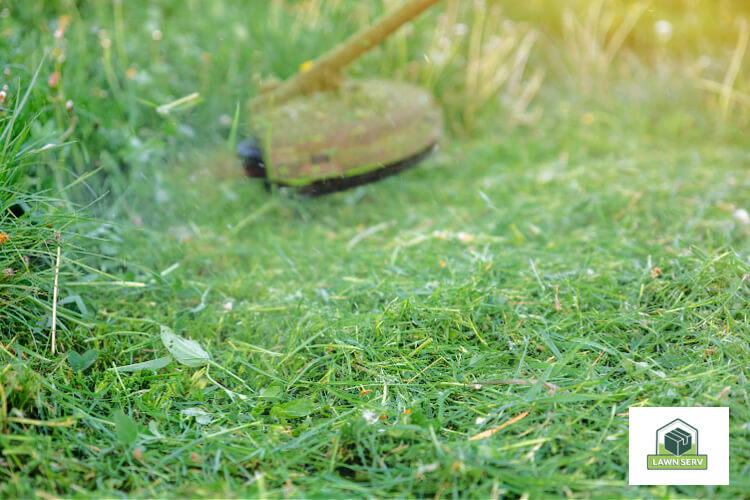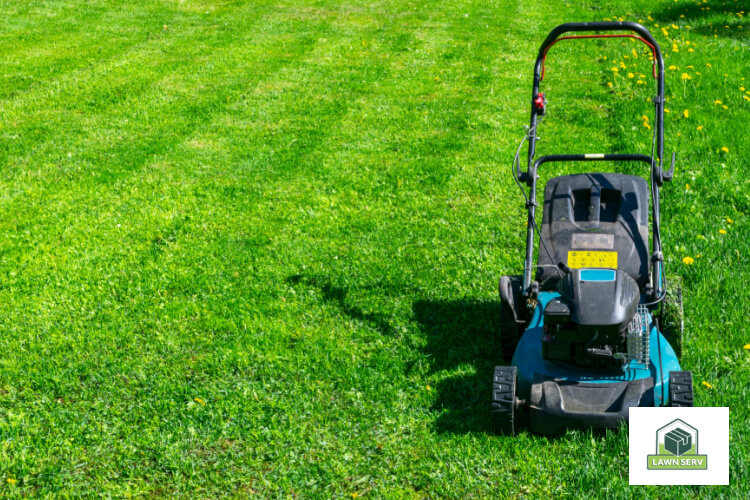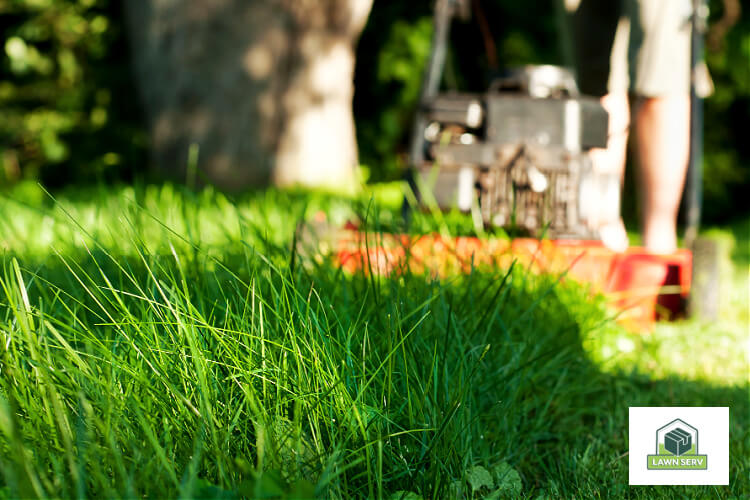
Nutsedge weed is a homeowner's nightmare.
This persistent intruder can transform your lush, green lawn into an unsightly mess in no time.
The problem with nutsedge is its resilience and adaptability.
If you've battled this weed before, you know how tough it can be to eliminate nutsedge completely from your yard.
Table of Contents:
- The Persistent Threat of Nutsedge Weed
- Identifying Nutsedge in Your Lawn
- Why Is Nutsedge So Difficult To Control?
- Eliminating Nutsedge Weed: A Homeowner's Guide
- Preventing Future Infestations of Nutsedge
- Lawnserv's Expert Solutions for a Healthy Lawn
- FAQs in Relation to Nutsedge Weed
- Getting Rid of Nutsedge
The Persistent Threat of Nutsedge Weed
Nutsedge, often referred to as nutgrass, is an aggressive lawn weed that presents a significant challenge for homeowners across the U.S. and beyond.
Its two primary varieties - yellow nutsedge and purple nutsedge - are particularly notorious due to their rapid growth patterns in warm climates like those found in southern states.
Distinguishing Between Yellow And Purple Nutsedges
Yellow nutsedges exhibit a yellowish-green hue while purple ones bear darker green leaves. However, color isn't the only distinguishing factor between these persistent turfgrass weeds. NC State Extension
Purple variants have been known to thrive even under drier soil conditions, making them more widespread compared with their counterparts who prefer moist environments.
Tackling The Root Of The Problem: Extensive Root Systems

A key characteristic of this troublesome lawn weed is its extensive root system, which can reach up to four feet underground. This makes it extremely difficult for ordinary control measures such as mowing or hand-pulling to effectively eradicate them from your yard completely.
- They resemble regular blades of grass at first glance but soon outgrow surrounding vegetation, becoming more noticeable over time because they're not controlled by typical lawn mowing practices.
- This ability, coupled with fast reproduction rates, makes it one tough adversary when maintaining healthy lawns free from unwanted infestations.
- In fact, if left unchecked, short grass encourages nutsedge proliferation, whereas well-maintained thick healthy grass discourages its spread, proving once again how crucial proper lawn care habits are towards achieving lush green yards all year round.
Identifying Nutsedge in Your Lawn
Nutsedge, also known as nutgrass, is a troublesome lawn weed that homeowners often struggle to identify. It's not your regular grass; its unique features, such as the distinct 'V' shape and three-sided structure, set it apart from other common lawn weeds.
The presence of small tubers or 'nutlets' at the end of its roots further differentiates this persistent turfgrass weed. While these nutlets are harmless if ingested by pets like dogs who occasionally eat grass, they play an integral role in nutsedge's survival, making them an aggressive lawn weed. NC State Extension provides more detailed information on identifying these species, which can be quite useful for homeowners dealing with this issue.
Yellow Nutsedge Vs Purple Nutsedge: Spotting The Difference
In southern states, particularly, two types of nutsedges - yellow and purple - commonly invade lawns. Yellow ones grow faster than your average healthy grass, while their purple counterparts tend to grow slower - both providing early signs even before you conduct a closer inspection.
Purple nutsedges have darker leaves compared to yellows', but both exhibit glossy appearances, adding another layer for identification. Their preferred habitats vary too, with yellow ones thriving better under wetter conditions, whereas purples adapt well in drier soils.
If you're struggling with controlling these stubborn invaders, LawnServ's monthly subscription boxes could provide some relief. Our experts handpick products tailored according to your specific yard needs, helping maintain a lush, green, healthy lawn year-round.
Why Is Nutsedge So Difficult To Control?

In the world of lawn care, nutsedge poses a significant challenge. Known as a particularly hard-to-manage weed in your garden, it is an obstinate grass that can prosper even under unfavorable conditions for other types of vegetation. The reason behind its stubborn resilience? Its unique growth pattern and reproduction strategy.
The nutlets can survive harsh environmental conditions and remain dormant for several years before sprouting new plants - making this persistent turfgrass weed extremely hard to eliminate completely.
The Role of Nutlets in Nutsedge's Survival
Nutlet production is key to nutsedge's survival. Each mature plant produces hundreds throughout a single growing season - leading many homeowners on what feels like an endless quest for a yard free from these troublesome invaders. UCANR Pest Notes provides further information on managing sedge infestations using both non-chemical methods and herbicide treatments if necessary.
- Mowing over or pulling out a plant leaves root fragments behind that give rise to new ones thanks to their regenerative abilities.
- A short grass encourages nutsedge by providing more sunlight exposure while healthy grass discourages its growth by creating shade inhibiting the photosynthesis process.
- To effectively control this invasive species requires patience along with cultural practices such as proper watering techniques combined with chemical controls specifically designed for sedges.
Eliminating Nutsedge Weed: A Homeowner's Guide
Tackle the stubborn nutsedge weed with our comprehensive guide. Learn to identify, control, and prevent it for a lush, healthy lawn all year round.
Effective Methods for Controlling Nutsedge
Nutsedge, often referred to as nutgrass, is a persistent turfgrass weed that can be quite challenging to control. Its extensive root system reaches deep into the soil, making it difficult to eradicate by simply pulling out its visible parts.
An effective strategy in combating this aggressive lawn weed involves using post-emergent herbicides specifically designed for nutsedges. These herbicides contain special active ingredients capable of eliminating these troublesome weeds without causing harm to your healthy grass.
Seeking Professional Help
In situations where you're dealing with large infestations of yellow or purple nutsedge in your yard, professional help may be required. Lawn care professionals have access to stronger treatments and specialized equipment needed when tackling larger areas affected by this stubbornly resilient weed.
A local lawn professional or senior turf specialist has the expertise necessary based on their wealth of experience handling similar issues before. Lawnserv, a reliable option if you prefer maintaining your own lawn but need expert guidance occasionally, offers DIY lawncare solutions tailored according to individual needs.
While hiring professionals does come at a cost, it's an investment worth considering given how quickly nutsedges can take over otherwise healthy lawns if left unchecked. This approach could save both time and effort while ensuring that your yard remains free from future invasions by these pesky weeds.
- The Role Of Herbicide Treatment:
To effectively deal with an invasion of yellow or purple nutsedge within one's garden area, employing proper herbicide treatment becomes essential. This method entails utilizing specific types such as Sledgehammer which contains Halosulfuron-Methyl - an active ingredient particularly lethal against varieties like Yellow & Purple Nutsedges. However, it doesn't adversely affect surrounding flora, thus preserving overall healthiness amongst other plants present there too.
- Maintaining Regular Monitoring
Battling nutsedge weed isn't a walk in the park. It's stubborn, but with targeted herbicides and professional help for large infestations, you can reclaim your lawn. Remember, it's not just about winning the battle—it's about preventing future invasions too.
Preventing Future Infestations of Nutsedge

The persistent turfgrass weed, nutsedge, can be a formidable opponent in the battle for maintaining a healthy lawn. However, with diligent care and preventive measures such as proper drainage systems and cultivating thick greenery, you can keep your yard free from this troublesome weed.
Maintaining Vigilance: The Importance of Regular Monitoring
Nutsedges are most active during warmer months, particularly thriving in the sunniest areas of your lawn. Hence, regular checks, especially around these spots, are essential. Taking swift action at first sight prevents further spread, making it less likely for them to establish a deep-reaching root system, which can be extremely difficult to control later on.
To assist homeowners in maintaining optimal watering levels, discouraging the growth of nutsedge while promoting healthier grass development, consider investing in tools like soil moisture meters available online. Here's one we recommend:
Promoting Healthy Grass Cover to Discourage Weed Growth
If nothing else works, consult experienced lawn care professionals or senior turf specialists for effective weed elimination without damaging the rest of your yard. They can ensure efficient eradication without causing harm to the rest of your landscape.
Lawnserv's Expert Solutions for a Healthy Lawn
In the quest for a healthy, nutsedge-free lawn, Lawnserv brings you expert DIY lawn care solutions. The unique aspect of their service is monthly subscription boxes that are customized according to your specific lawn needs.
This approach by Lawnserv has been found particularly useful in dealing with aggressive weeds like yellow and purple nutsedges while maintaining a lush green turf even under challenging weather conditions.
A Customized Approach to Lawn Care
The standout feature of Lawnserv's services is its personalized attention towards each client's needs. They stay away from generic, all-encompassing solutions because they recognize that no two lawns are the same; soil type, grass species, climate conditions and individual preferences should be taken into account when deciding what products to include in each customer's box.
Factors such as soil type, grass species, local climate conditions, and personal preferences play an important role in deciding which products go into your box every month. This tailored strategy guarantees optimal results and helps keep your yard at its prime all year round.
Eco-Friendly Products and Practices
- All the selected items included within these boxes comply with environmental safety standards, ensuring minimal impact on surrounding ecosystems.
- These eco-friendly practices effectively treat persistent turfgrass weeds like yellow and purple nutsedges without harming regular blades of grass present in your lawn.
FAQs in Relation to Nutsedge Weed
What will kill nutsedge but not grass?
Post-emergent herbicides specifically designed for nutsedge, like Sledgehammer, can effectively eliminate the weed without harming your lawn.
Why is nutsedge a problem?
Nutsedge is an aggressive weed with deep roots and hardy nutlets that make it difficult to control. It can quickly overrun lawns if left unchecked.
Is nutsedge good for anything?
In some cultures, parts of the plant are used as food or medicine. However, in terms of lawn health, it is generally considered detrimental due to its invasive nature.
How do I permanently get rid of nutsedge?
A combination of hand-pulling mature plants, using specific post-emergent herbicides, and maintaining a healthy grass cover helps in permanently eliminating this persistent weed from your yard.
Getting Rid of Nutsedge Completely
Getting rid of nutsedge weed isn't an easy task, but it's not impossible either.
You've learned that the key to controlling this persistent pest lies in understanding its growth patterns and survival strategies.
The distinct V-shaped leaves, three-sided structure, and nutlets are all tell-tale signs you're dealing with a nutsedge infestation.
Remember: deep roots make it tough to eliminate completely.
Hand-pulling can work for small patches while post-emergent herbicides like Sledgehammer are effective for larger invasions. Weed control can actually be tricky. Luckily, that's what we dived into in one of our blog posts. Here's LawnServ's DIY Weed Removal Guide for Beginners!
Maintaining good drainage, healthy grass cover, and proper irrigation practices go a long way in preventing future outbreaks.
Now that you have armed yourself with knowledge about this stubborn intruder, why not take your lawn care game up another notch?
At Lawn Serv, we offer DIY lawn care solutions tailored just for your needs. With our monthly subscription boxes filled with expertly handpicked products best suited for your yard conditions, maintaining a lush green healthy lawn year-round is no longer just wishful thinking - it's entirely possible! Ready to start on the path towards having the perfect lawn?


